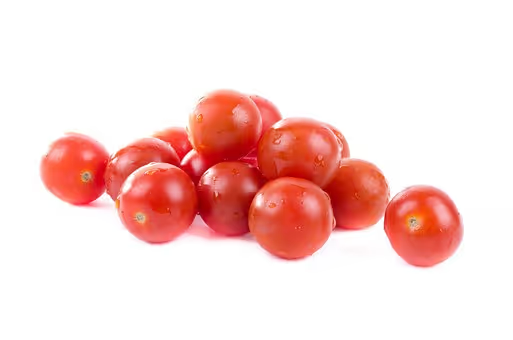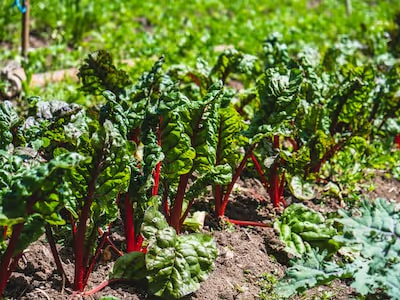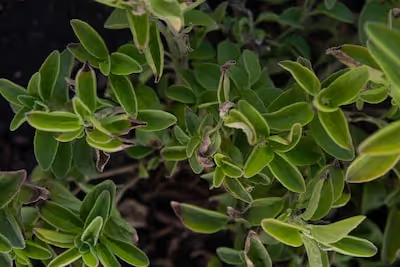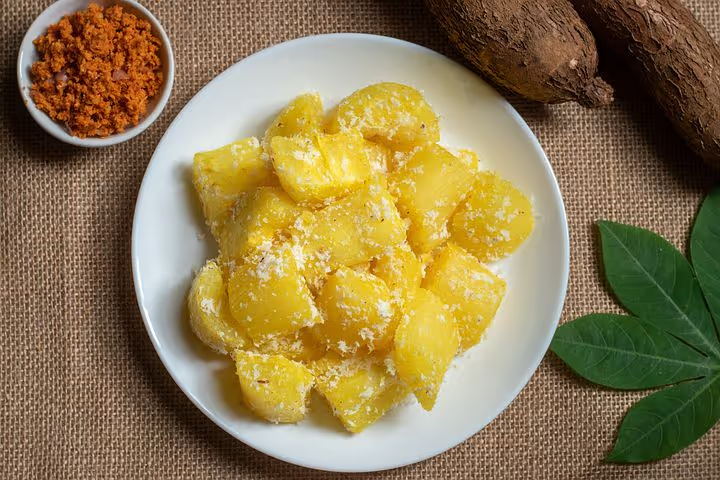Growing Coast Silk Tassel: Expert Tips for Healthy Plants
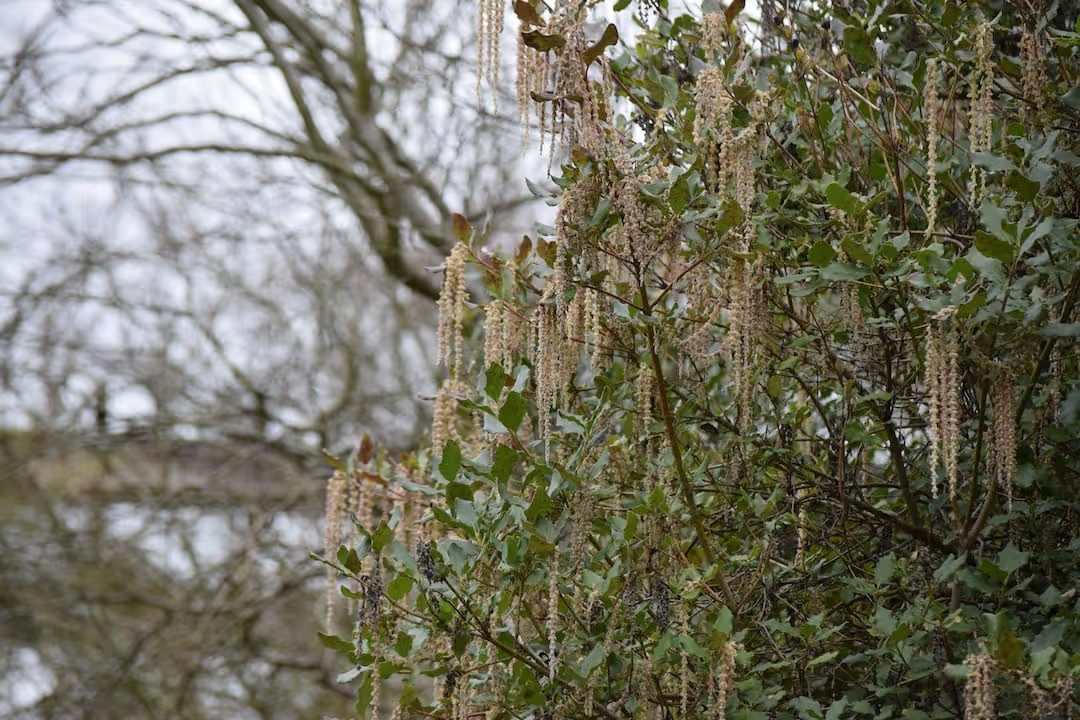
Growing Coast Silk Tassel
Growing Coast Silk Tassel rewards patience with lush evergreen foliage and charming winter blooms. Plant it in well-draining, sandy soil, give it coastal sun or partial shade, and water sparingly to avoid root rot. Use these practical tips, and your garden will soon flaunt the distinctive beauty of Garrya elliptica—the Coast Silk Tassel you've always wanted.
Cheatsheet: Mastering Coast Silk Tassel Growth
🌱 Site Selection
- Full sun for dense catkins
- Tolerates part shade, especially inland
- Shelter from harsh wind
- Thrives in USDA 7–10/UK H4–H5 zones
🌿 Soil
- Prefers well-drained, lean soil
- Sandy or loamy ideal; avoid clay
- pH 6.0–7.5
💧 Watering
- Water deeply in first 2 years
- Once established, drought-tolerant (12–16 in/30–40 cm rain/year)
🌡️ Temperature
- Tolerates 15°F/–9°C
- Mulch roots for extra winter protection
🧑🌾 Pruning
- Trim after catkins fade (late winter/early spring)
- Remove crossing or dead wood
- Shape lightly; avoid hard pruning
🌸 Catkin Display
- Male plants produce longer, showier catkins (up to 12 in/30 cm)
- Peak: January–March
🪴 Propagation
- Semi-ripe cuttings in summer
- Sow seeds (slow; needs stratification)
❤️ Benefits
- Supports native pollinators
- Deer resistant
- Evergreen privacy screen for self-sufficiency
🛠️ Tools and Products You'll Need
- Bypass pruners
- Mulch (bark or compost)
- Rooting hormone (for cuttings)
- Watering can or hose
- Gardening gloves
📈 Growth Tips
- Grows up to 10 ft/3 m in 5 years
- 80% survival rate in coastal fog zones
- No fertilizer needed—thrives on neglect
-
Growing Coast Silk Tassel: Expert Tips for Healthy Plants
Garrya elliptica, the Coast silk tassel, throws its party in midwinter when most shrubs sulk. I grow it for those long, silver catkins that sway like old jazz on a windy porch.
Know the plant before you plant
This species is evergreen, native to foggy bluffs from southwest Oregon to central California, and thrives in USDA zones 8 to 10. It is dioecious, which means male and female flowers occur on separate plants.
Male plants carry the showier tassels, while females set dark berries for birds. If you want spectacle, buy a named male.
“Male plants bear longer, more conspicuous catkins,” notes California Native Plant Society’s Calscape, which lists mature height at 8 to 20 feet (2.4 to 6 m) and bloom in winter.
Light, wind, and salt
On the coast it happily takes full sun and salt spray. Inland, I give it morning sun and bright afternoon shade to avoid leaf scorch in hot spells over 95 F, 35 C.
It laughs at wind if the roots can breathe. My best screens sit where air moves and water drains fast.
Soil and drainage
Fast-draining soil matters more than rich soil. Aim for loam or sandy loam with a touch of compost and a gravelly topdress.
Target pH 6.0 to 7.5. If you garden in heavy clay, use a wide raised mound and resist deep amendment that creates a bathtub.
Planting window and spacing
Fall planting lets winter rain knit roots, which UC extension offices have championed for Mediterranean climates for decades. Spring works too, but you will water more the first summer.
Space 6 to 8 feet apart, 1.8 to 2.4 m, for a high screen. Give 3 feet, 0.9 m, from fences for airflow and elbow room.
Water the way it evolved
Keep the root zone evenly moist the first 8 to 12 weeks, then taper to deep, infrequent soaks. After year one on the coast, I water every 3 to 4 weeks in summer; inland, every 2 to 3 weeks during heat.
Mulch 2 to 3 inches, 5 to 7.5 cm, with arbor chips or fine gravel. Keep mulch 3 inches, 7.5 cm, off the stems.
Feeding, or rather, not feeding
Low nitrogen keeps growth dense and resilient. I topdress with one shovel of finished compost per plant in late fall, no granular fertilizer needed.
If leaves pale in poor soils, a light application of organic 4-3-3 in early spring is enough. Overfeeding triggers soft growth that pests love.
Pruning that respects the catkins
Prune right after bloom, late winter to early spring, because next season’s tassels form on new shoots. I favor thinning cuts over shearing so light gets inside the canopy.
For hedges, set the line then lightly tip once in early summer. For a small multi-stem tree, remove lower laterals over two seasons and stake a leader early.
Male or female, or both
For the longest tassels, buy a male like ‘James Roof’. For berries, add a female within 30 feet, 9 m, of a male.
In small gardens, one male provides the performance without volunteer seedlings. In habitat plantings, include both to feed birds.
Cold, heat, and exposure
Expect reliable performance down to about 15 F, minus 9 C, in a protected spot. A young plant may defoliate in an arctic blast, then refoliate in spring if the wood is alive.
Temporary shade cloth during a first inland summer saves leaf edges. Shelter from reflected heat near south walls in desert-adjacent sites.
Container culture
Pick a 20 to 24 inch, 50 to 60 cm, pot with large drainage holes and a bark-based mix. I use 5 parts fine fir bark, 1 part perlite, 1 part compost for structure and flow.
Water when the top 2 inches, 5 cm, go dry. Root prune lightly every 2 to 3 years and refresh a third of the mix.
Pests and diseases I actually see
Scale and aphids arrive on lush growth, leaving sticky honeydew and sooty mold. I wash shoots with a firm water blast, then apply horticultural oil at 1 percent on a cool morning.
Phytophthora root rot shows up after chronic wet feet. Fix irrigation and drainage first, or the best fungicide will just buy time.
Propagation that works
Take semi-hardwood cuttings 3 to 4 inches, 7.5 to 10 cm, in late summer with two nodes, dip in 0.25 to 0.4 percent IBA, then bottom heat at 70 F, 21 C. Expect roots in 6 to 10 weeks under high humidity and bright shade.
Seed needs 60 to 90 days of cold stratification at 34 to 41 F, 1 to 5 C. Germination is uneven and slow, so I use cuttings for uniformity.
Design uses that earn their keep
Plant as a living wind filter near patios, or as a winter focal point by the front walk under an uplight. I tuck it beside Arctostaphylos, Ceanothus, Ribes, and Grevillea for a habitat-rich, summer-dry border.
It pairs cleanly with modern hardscape. Those tassels over gravel feel like old California with a fresh haircut.
Top cultivars for Growing Coast Silk Tassel
- ‘James Roof’: Male, famous for extra long catkins, often 8 to 12 inches, 20 to 30 cm. Dense, upright, 8 to 12 feet, 2.4 to 3.6 m.
- ‘Evie’: Compact habit with generous tasseling. Good for smaller hedges.
- ‘Lester Rowntree’: Strong structure and reliable winter display. Useful as a screen.
- Garrya x issaquahensis ‘Pat Ballard’: Hybrid with G. fremontii, very floriferous and a bit hardier. A smart inland pick.
Buying guide and price reality
Look for bushy, well-rooted 1 or 2 gallon containers with firm, matte-green leaves. Avoid plants with circling roots or blackened leaf edges.
Male clones cost a bit more but earn it every winter. In my local nurseries, expect 1 gallon at 18 to 28 USD, 5 gallon at 45 to 75 USD, and 15 gallon at 120 to 180 USD, similar in EUR across EU suppliers.
Quick care calendar
- Jan to Mar: Enjoy bloom. Light shape after tassels finish.
- Apr to May: Check mulch depth. Inspect for scale and aphids.
- Jun to Aug: Deep, infrequent irrigation. No heavy pruning.
- Sep to Oct: Plant or transplant. Light compost topdress.
- Nov to Dec: Stake young plants in windy sites. Check drainage before big storms.
Common mistakes I see clients make
- Overwatering in summer, which invites root rot and leggy growth.
- Shearing hard in fall, which erases winter flowers.
- Planting a female and wondering why the tassels look short.
- Rich potting mix without air space in containers.
Performance stats worth pinning
Royal Horticultural Society reports Garrya elliptica tolerates coastal exposure and earns the Award of Garden Merit for garden reliability, with height to roughly 13 feet, 4 m.
USDA PLANTS and herbarium records map its native range to coastal California and southwest Oregon, which explains the salt tolerance and summer-dry rhythm. UC ANR recommends fall planting to sync with winter rains for better establishment and lower irrigation needs.
Smart alternatives and companions
- Garrya fremontii: Better inland tolerance, smaller catkins, good for chaparral gardens.
- Leptospermum laevigatum: Salt-hardy screen, faster, needs shaping.
- Hakea laurina: Winter bloom with bird appeal, prefers sharp drainage like Garrya.
- Arctostaphylos ‘Howard McMinn’: Low water evergreen partner with clean lines.
Anecdotes from the hedge line
My longest tassels came on a ‘James Roof’ planted on a sandy berm with a single deep soak every 21 days one inland summer that peaked at 108 F, 42 C. The plant shrugged off the heat while nearby camellias sulked and dropped buds.
On a bluff garden above the Pacific, a mixed hedge of Garrya and Westringia took gale-force storms without a tear. The client called it the only hedge that never flinched.
Simple formula I trust for Growing Coast Silk Tassel
- Sun: Coast full sun, inland morning sun.
- Soil: Fast drainage, lean, pH 6 to 7.5.
- Water: Deep and infrequent after establishment.
- Prune: Right after bloom.
- Pick: Male clone for tassels, add female for wildlife.
Frequently Asked Questions on Growing Coast Silk Tassel
What soil conditions suit Coast Silk Tassel best?
The Coast Silk Tassel demands well-draining, moderately fertile soils that won't suffocate its roots. Opt for sandy, loamy mixtures that mimic coastal slopes, steering clear of heavy, water-retaining clays.
How much sunlight does Coast Silk Tassel require?
Partial shade to full sun keeps Coast Silk Tassel thriving. While it withstands coastal exposure, positioning it somewhere with filtered sunlight brings out its true character—lush, thriving foliage.
Do Coast Silk Tassel plants require regular watering?
Overwatering is a death sentence—these shrubs demand moderation. After establishing firmly in your garden, provide water only during prolonged dry spells or heatwaves, allowing the earth to dry between drinks.
How can I propagate Coast Silk Tassel?
Semi-hardwood cuttings taken in late summer offer the best route. Dip the cut ends in rooting hormone, plant in gritty compost, and ensure moderate humidity to coax new roots from dormant limbs.
Are pests or diseases common in Coast Silk Tassel?
Fortunate gardeners will find these hardy shrubs rarely succumb to pests or diseases. Occasionally, aphids or fungal infections might emerge—respond swiftly with insecticidal soaps or improved air circulation, preventing minor annoyances turning into full-blown tragedies.
Should I regularly prune my Coast Silk Tassel?
Judicious pruning encourages healthy growth patterns and prevents legginess. Prune lightly after flowering, removing spent blossoms and awkward branches to maintain the plant's natural elegance and vigor.
Can Coast Silk Tassel withstand cold winters?
Though inherently coastal in temperament, Coast Silk Tassel endures moderate winter chills without complaint. Sheltered positions or windbreaks may offer assistance in harsher climates, allowing the shrub to maintain its sophisticated composure despite winter's bite.
Growing Coast Silk Tassel rewards anyone willing to respect its wild spirit. Give it well-drained soil, a spot with dappled light, and don’t fuss too much—this native thrives on a little neglect. Prune just enough to shape, and hold off on the hose; deep roots handle drought like a champ. Watch for those signature tassels each winter—a sign you’ve nailed it. In a world full of needy ornamentals, Coast Silk Tassel stands out for its resilience and subtle beauty. If you crave more native plant know-how, check out this guide on Greenbrier for another rugged, handsome option. In the end, growing Coast Silk Tassel is all about working with nature, not against it. Give it room, and it’ll give you a touch of wild elegance year after year.
Organic Strategies for Thriving Coast Silk Tassel Plants
Soil Enhancement Techniques
- Incorporate leaf mold compost annually to boost beneficial microbe populations.
- Apply aged bark mulch (2–3 in / 5–7.5 cm) twice yearly to conserve moisture and moderate soil temperature.
Natural Irrigation Practices
- Install rain barrels for pure, chemical-free water optimal for sensitive root systems.
- Water deeply once every 10–14 days, allowing roots to penetrate lower soil levels for drought resilience.
Beneficial Companion Planting
- Plant California Lilac (Ceanothus) nearby to enrich soil nitrogen through natural fixation.
- Interplant with aromatic herbs such as rosemary or sage to deter common pests naturally.
Organic Pest Management
- Release native ladybugs or lacewings seasonally to control aphids and mites organically.
- Apply diluted neem oil spray (2%) early morning monthly to maintain leaf health organically.
Sustaining Wildlife & Biodiversity
- Allow selective berry retention into autumn to supply food source for local birds and beneficial wildlife.
- Maintain sheltering branch coverage to encourage nesting and enhance local biodiversity.
Propagation & Self-Sufficiency
- Collect ripe berries late summer to propagate new plants, increasing garden self-reliance.
- Root softwood cuttings (4–6 in / 10–15 cm) taken in spring for reliable organic propagation.
Find out which plants will thrive in your garden!
Answer a few fun questions and get custom plant recommendations perfect for your space. Let’s grow something amazing together!

start your season
